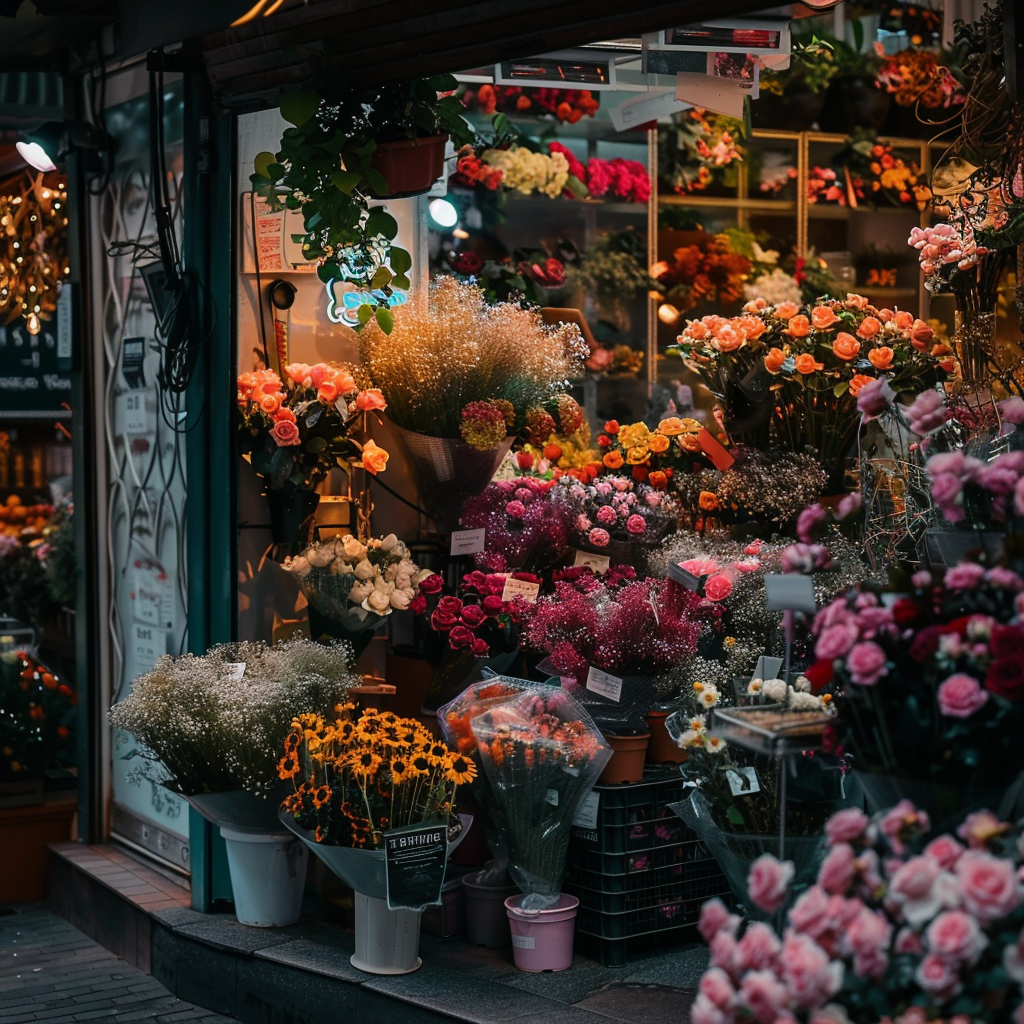Floral arrangements play a pivotal role in enhancing the aesthetics and ambiance of any event, turning ordinary spaces into mesmerizing scenes. The art of crafting the perfect bouquet involves not only creativity and vision but also an understanding of the fundamental aspects of flower arrangement. This guide delves into the evolving trends and essential techniques of bouquet design, providing both novices and seasoned florists with insights into creating beautiful, impactful displays that capture emotions and themes of special occasions.
Trends in Bouquet Design
In the kaleidoscope of floral artistry, Trends in Bouquet Design unfurl like petals in the gentle breeze, each one a testament to the ever-evolving landscape of creativity and innovation. Amidst this vibrant tapestry of floral expression, a myriad of trends emerges, each weaving its own unique narrative of beauty and allure.
One such trend that has gained considerable traction in recent years is the emphasis on sustainability and locally-sourced flowers. In an era marked by growing environmental consciousness, betrothed couples and event planners alike are increasingly opting for blooms sourced from nearby growers, eschewing the carbon footprint associated with long-distance transportation. Not only does this trend support local economies and reduce environmental impact, but it also imbues bouquets with a sense of authenticity and connection to the surrounding landscape.
Another prevailing trend in bouquet design is the resurgence of nostalgic styles infused with a modern twist. The garden style bouquet, with its ethereal charm and romantic allure, reigns supreme among contemporary floral aesthetics. Characterized by a loose, organic arrangement that mirrors flowers in their natural habitat, this whimsical style evokes a sense of whimsy and enchantment, transporting beholders to a realm where beauty knows no bounds.
Conversely, the rise of minimalist designs has ushered in a new era of understated elegance and refined simplicity. Focusing on clean lines, subtle textures, and harmonious color palettes, minimalist bouquets eschew extravagance in favor of quiet sophistication. Embracing the mantra of “less is more,” these designs exude a timeless allure that transcends fleeting trends, offering a timeless elegance that resonates with modern sensibilities.
Fundamental Techniques of Composition
In the enchanting realm of floral composition, Fundamental Techniques of Composition serve as the cornerstone upon which every breathtaking bouquet is built. Like the strokes of a painter’s brush upon a blank canvas, these techniques imbue floral arrangements with depth, dimension, and a sense of artistry that captivates the imagination.
- One of the fundamental techniques in floral composition is layering, a delicate dance of blooms that creates depth and dimension within the bouquet. By strategically placing flowers of varying heights and textures, florists imbue their creations with a sense of dynamic movement and visual interest, transforming a mere collection of blooms into a captivating tapestry of color and form.
- Complementing the art of layering is the technique of clustering, where blooms are grouped together to create focal points and visual impact. Whether clustering flowers of similar hues to create a monochromatic masterpiece or juxtaposing contrasting colors for a bold statement, this technique allows florists to play with scale and proportion, infusing their arrangements with drama and flair.
- Another essential technique in the florist’s arsenal is the art of threading, a subtle yet impactful method of weaving delicate tendrils of greenery throughout the bouquet. Like the threads of a tapestry, these verdant accents serve to bind the bouquet together, adding cohesion and unity to the overall composition while providing a visual counterpoint to the vibrant blooms.
Choosing Flowers and Materials
In the delicate art of floral design, the process of Choosing Flowers and Materials is akin to selecting the finest ingredients for a culinary masterpiece—a careful balance of aesthetics, functionality, and personal taste. With each bloom and material chosen, florists embark on a journey of creativity and expression, weaving together a symphony of color, texture, and fragrance that captures the essence of the occasion.
At the heart of this process lies the consideration of occasion and theme, guiding florists in their selection of flowers and materials that best complement the spirit of the event. For weddings and romantic celebrations, timeless classics such as roses, peonies, and lilies reign supreme, their delicate beauty and symbolic significance evoking sentiments of love and enchantment. Conversely, for more whimsical affairs or bohemian-themed events, florists may opt for unconventional blooms like wildflowers or proteas, infusing their arrangements with a sense of free-spirited charm and whimsy.
Equally important is the consideration of longevity and durability, particularly for bouquets intended to withstand the test of time. Flowers like roses and orchids, known for their resilience and longevity, are favored choices for such occasions, ensuring that the bouquet retains its beauty long after the festivities have ended. Additionally, the inclusion of hardy greens such as eucalyptus and fern adds both texture and depth to the arrangement while providing a sturdy foundation that enhances its longevity.
Ideas for Special Occasions
In the realm of floral design, Ideas for Special Occasions bloom like flowers in a garden, each one a unique expression of creativity and sentiment tailored to the momentous events that mark our lives. From weddings and birthdays to anniversaries and holidays, these occasions offer a canvas upon which florists can weave a tapestry of beauty and emotion, crafting arrangements that not only adorn spaces but also evoke memories and emotions that linger long after the petals have fallen.
When it comes to weddings, the possibilities are as endless as the boundless horizon. For couples embarking on the journey of matrimony, florists may suggest romantic and lush arrangements that embody the timeless allure of love. Soft pastels or vibrant blooms, carefully selected to complement the season, infuse the venue with an aura of enchantment and romance, setting the stage for a day filled with joy and celebration.
Similarly, birthdays and anniversaries offer an opportunity to celebrate the passage of time and the bonds that unite us. For these special occasions, florists may propose bouquets that reflect the unique personality and tastes of the recipient, incorporating personalized touches such as favorite flowers or colors that hold sentimental significance. Whether it’s a bouquet of vibrant sunflowers to brighten a loved one’s day or a delicate arrangement of roses to commemorate years of love and devotion, these thoughtful details transform the simple act of giving flowers into a meaningful gesture that speaks volumes about the depth of one’s affection.
Also, we advise you to read our other article, where we talked about betting basics for the first time.
FAQ
Recent trends include the use of sustainable and locally-sourced flowers, as well as popular styles like the garden style bouquet and minimalist designs.
Sustainable practices such as using locally-sourced flowers support local growers and reduce environmental impact, contributing to the overall trend of environmentally conscious designs in the floral industry.
Recent trends reflect a broader shift towards more personalized and environmentally conscious designs in the floral industry, with a focus on supporting local growers and creating arrangements that mimic natural beauty and simplicity.

